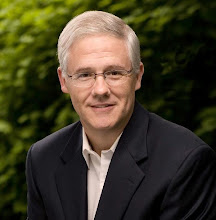Argo is a terrific political thriller that will probably get some Oscar nominations. I hope that includes one for writer Chris Terrio whose ability to tell an epic true story using the thriller genre allows him to transcend both true story and thriller.
The political thriller is a popular sub-genre in novels, but much less so in film. That’s because the typical opposition in political thrillers – some form of government agency – is so big and so hidden that it’s not a fair fight. Which means political thrillers in film often end badly.
But that’s not the case in Argo. This film is based on real events whose outcome we know, or at least suspect, going in. Besides giving us an upbeat ending, these real events give the highly choreographed thriller beats a raw, gritty believability and tremendous emotional impact.
Still, the true story foundation creates some real problems for the writer. The biggest difficulty you face in writing a true story is that real events don’t tend to have dramatic shape. They often don’t build to a final decisive battle and they often have long stretches of time where no story beats occur.
Again, that’s not the case with Argo. The final battle is extremely dramatic and the short time period in which the key events unfold means there is no down time. But the true story foundation does require Terrio to structure his thriller in a much different way than normal.
In the typical thriller, the hero investigates an apparent opponent who may, or may not, be guilty of a crime. The opponent’s true power, and the final truth of that character’s guilt, is parceled out over the course of the story. Notice that plot in this form of thriller is based on revelations, and we save the biggest revelation for last.
In Argo, the opponent is not a suspicious, hidden character but rather a known, extremely powerful Iranian security force that will capture and possibly kill the heroes. So plot will not come from a succession of reveals. There is nothing about the enemy we don’t know from the very beginning.
Instead plot must come from the hero’s plan and, even more so, from a succession of building attacks against the hostges. So the writer sets up a huge vortex, a crosscut between the hero trying to get the hostages out and the opponents closing in for the kill.
Terrio creates the vortex by beginning with the endpoint in space and time, the airport, where heroes and opponents finally decide the issue. He then works backward to the beginning of the two prongs: the hero creating his plan and the opponents trying to find who is missing.
One of the key techniques for setting up the vortex properly has to do with the desire line of the story. The desire line in thrillers is especially tricky because it always involves some version of investigating while under attack. Notice there is a push-pull effect on the desire line that is difficult for the writer to calibrate. When the hero is investigating he is active and moving forward. But over the course of the story the hero comes under increasingly aggressive assault by the opposition, which makes him reactive and knocks him back.
In Argo, Terrio replaces the investigation line of most thrillers with an even clearer goal: get the captives out. The opponents have an equally clear goal: keep the captives in. The endpoint of both those goals is the same place, the airport. So now the vortex story structure is simply a matter of speeding up the crosscut as the heroes and opponents approach the convergent point.
This crosscutting vortex structure goes to the heart of the film medium itself. It’s as fundamental as the crosscut between the cowboy racing to save the damsel tied to the tracks and the oncoming train that’s going to run her over. In this simplest form of crosscut, the point is to set up the pressure cooker effect. The faster you crosscut as you approach the end, the greater the pressure builds on the audience. If the hero wins, the result is total elation.
The writer adds a number of other story and dialogue techniques that make this script really sing, especially some very funny inside Hollywood jokes as the hero is concocting his plan. I saw the film at the Writer’s Guild theater and one joke in particular about directors had the audience in stitches. In a story this intense, comedy plays the same role as the fake attack does in horror. It releases the pressure on the audience only to allow the writer to kick the pressure up to an even higher level.
But the key to the success of this script and film is the writer’s ability to infuse an already dramatic true story with powerful thriller beats. Thriller tends to be a very narrow form. In the Detective, Crime Story and Thriller Class I talk about transcending the form by combining it with its genre opposite, the epic. By accomplishing this difficult feat, Chris Terrio has written one of the best films of the year.
Oct 30, 2012
Argo
Labels:
Argo,
Blockbuster,
Chris Terrio,
John Truby,
Oscars,
Political Thriller,
Thriller,
true story
